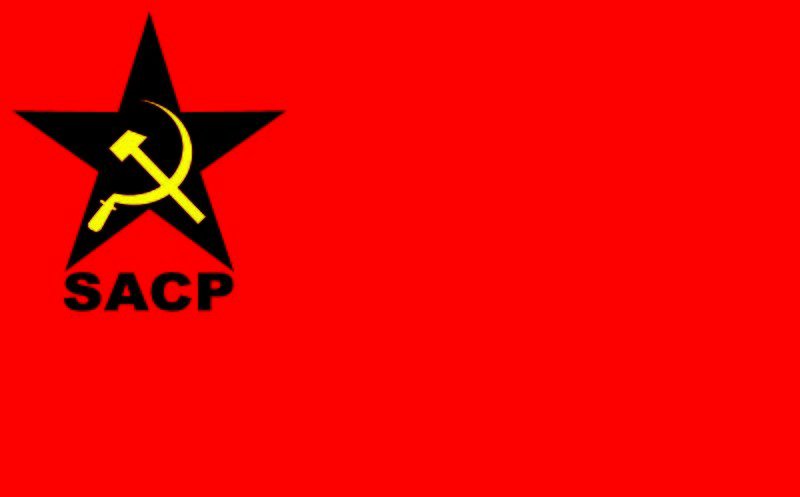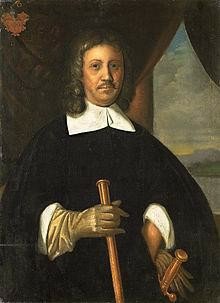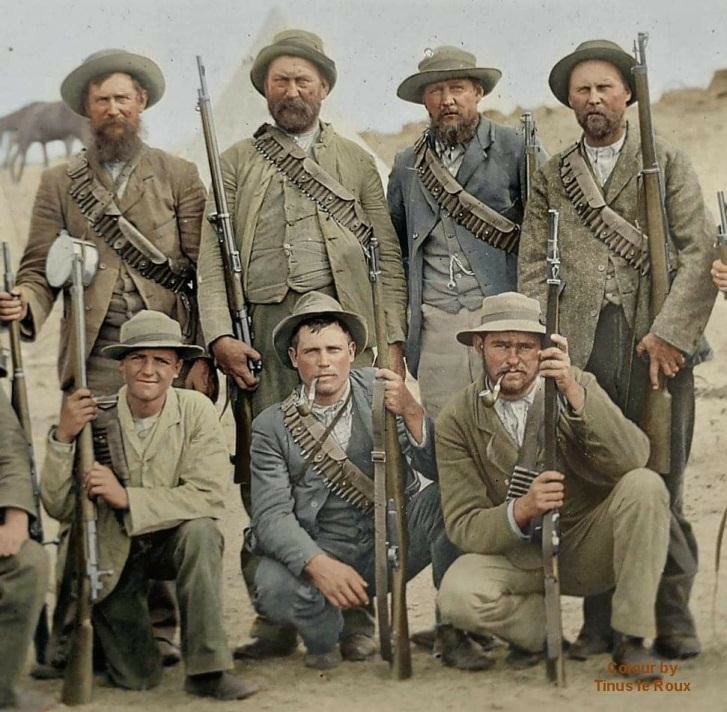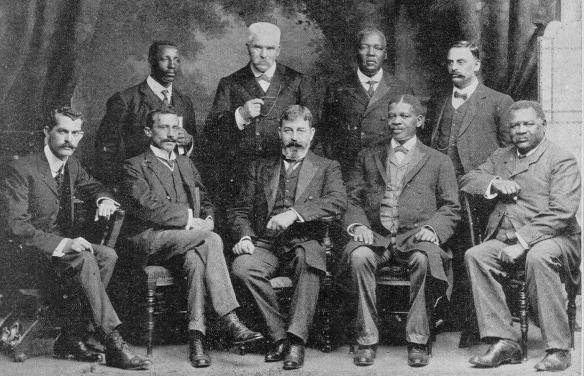Introduction: This is an article where we have tried to discuss the entire journey of the Communist Party. This is an elaborate discussion and we've found out that the discussion would be incomplete without understanding the complete history of the country.
The South African Communist Party is 100 years old this year. Originally named the Communist Party of South Africa, its Founding Conference was held in Cape Town between 30th July and 1st August 1921. To appreciate the history of the CPSA/SACP its relationship to the national liberation movement in South Africa and in particular to the African National Congress (ANC) needs to be understood ― and yet at the beginning, the origins of the two were very different.
South Africa, a Brief History of European Colonisation
The European colonisation of South Africa began almost in 1652 when Jan van Riebeeck (1619-1677) established a stopover at the natural harbour at Cape Town for the ships of the Vereenigde Oost Indische Compagnie (VOC) ― in English the United East India Company, but better known as the Dutch East India Company. The main interest of the VOC was in trading in spices grown in the Dutch East Indies which in 1949 became independent as Indonesia. Ships were able to load fresh water and fresh vegetables grown by the small farming community which grew up around Cape Town.
The mainly Dutch community found Khoi sheep herders already there and there was some intermarriage. Slaves and servants from Indonesia, known as "Malays", created the first Muslim community in South Africa. The Afrikaans language began to emerge as a language separate from Dutch. As more European settlers came to the Cape, racial separation between those of predominantly European descent became known as "Afrikaners" and those of obviously mixed appearance as "Coluureds", yet today, no Afrikaner is of pure European descent.
In 1806, during the Napoleonic Wars, the British grabbed Cape Town and many Afrikaners, also known as "Boers" (farmers), not wanting British rule, began trekking inland setting up Boer Republics, often facing resistance from the indigenous Bantu peoples whose territory they were seeking to occupy.
The British established Natal colony on the south east coast of Africa in 1843 and started growing sugar cane. With the people of the adjacent Zulu kingdom uninterested in cutting sugar cane, the British started bringing in indentured labour from India Indentured in 1860. Today, there are more than 1¼ million Indian South Africans, most of them around Durban, many being descended from indentured labourers but also from traders. It was not until 1878, that the Zulu kingdom was subdued
There is a violent history of conflict between ethnic groups in South Africa. As Boer settlers were followed up by British imperial forces, the African people resisted fiercely, sometimes defeating both Boers and British
In the year 1870 at Kimberley, in the northern part of the Cape Colony, diamonds were discovered. This led to a rush to dig the diamonds and the establishment of the De Beers company which controls most of the world‟s diamond trade even today. The imperialist adventurer, Cecil John Rhodes (1853-1902) gained control of De Beers which gave him the funding he needed for his other exploits. For the first time, South Africa was seen to be more than just useful farmland at Africa‟s southern tip.
In 1885, the Berlin Conference divided Africa among the European imperialist powers. Before 1885, only 11% of Africa‟s territory was under European rule. 10 years later the figure was 92%.
In 1886, the earth‟s biggest known goldfield was discovered next to a village known as Johannesburg in the territory of a Boer republic known as the "South African Republic" but better known to history as the Transvaal. Within 10 years the gold rush led to Johannesburg becoming a city of 100,000 people.
The discovery of diamonds and then of gold, led to the British imperialists seeing South Africa as a major source of revenue.
Imperialist expansion by the British led to conflict between Boers and British with the First Anglo Boer War being fought in 1880-1881 and the Second Anglo-Boer War, also known as the South African War from 1899.to 1902. The British ruthlessly took control of the Transvaal and the Orange Free State, but realised that it was in their interests to create a single government for the whole country with the co-operation of the Afrikaners. In 1910, the Cape Colony, Natal and the former Boer Republics of Transvaal and Orange Free State were united as the Union of South Africa with the former Boer General, Louis Botha (1862-1919) as Prime Minister. But as much as the white minority was united by this agreement, the black majority was excluded.
Formation of the African National Congress (ANC)
In 1909, knowing that the franchise in the Cape which depended on property qualifications rather than race was not going to be extended to the other 3 provinces, a delegation went to London headed by liberal lawyer and former Cape Prime Minister, William Schreiner. Included in the delegation were Thomas Mtobi Mapikela (1869-1945) and Walter Rubusana (1885-1936). Both of these men went on to become founders of the ANC in 1912. Also with them was Dr Abdullah Abdurahman (1872-1940),leader of the African People‟s Organisation which later developed into the Coloured People‟s Congress, which was to merge with the ANC. Abdurahman‟s daughter, Cissie Gool (1897-1963) was to emerge as one of the most prominent women members of the Communist Party of South Africa.
The South African Native National Congress (SANNC), as it was first called, was formed in 1912. It changed its name to African National Congress (ANC) in 1923. At its formation it included delegates from Swaziland (Eswatini), Basutoland (Lesotho), Bechuanaland (Botswana), Northern Rhodesia (Zambia), Southern Rhodesia (Zimbabwe and Nyasaland (Malawi). Thus its formation influenced independence movements in all British-colonised countries in the region.
Led by John Langalibalele Dube (1871-1946), Sol Plaatje (1876-1932) and Pixley ka Isaaka Seme (1881-1951) and including a House of Chiefs as part of its structure, was not, at its formation, a national liberation movement. It was a pressure group for the black elite wanting to find a place within the system.
The newly formed SANNC had its first major challenge in 1913 withthe passing of the Natives‟ Land Act, which was designed to entrench white power and property rights in the countryside — as well as to solve the "native problem" of African peasant farmers working for themselves and denying their labour power to white employers. The new legislation was first implemented in the Orange Free State where Afrikaner farmers began expelling black peasants from their ancestral land as "squatters".
Before the Land Act became law, the SANNC collected petitions and sent polite deputations to the South African government. With the outbreak of the First World War in 1914, they sent a deputation to London to seek intervention by the British government.
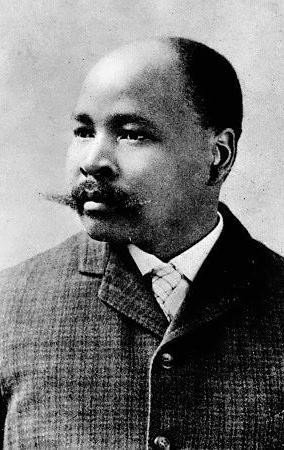
Throughout his book Native Life in South Africa, published soon after the outbreak of the First World War, Sol Plaatje emphasises the loyalty of the Africans to the British Empire.
“The writer has received several letters expressing the native resentment of the idea that they should fold their arms and cogitate while other British subjects, irrespective of colour, are sacrificing their lives for the defence of the Empire in this, the darkest period of His Majesty's reign.”(p.228)
Sol T. Plaate, Native Life in South Africa, Before and Since the European War and the Boer RebellionFourth Edition, electronic text.
A notable feature of this period is the militancy of the women led by Charlotte Maxeke (1871-1939) in comparison to the men. African men in many parts of South Africa had been forced to carry passes; in 1913, the Orange Free State government tried to force women to do the same. Led by Maxeke, the women burnt their passes. Though many were arrested, Pass Laws were dropped, in 1918, Maxeke founded the Bantu Women‟s League and the same year successfully led protests against another attempt to introduce Pass Laws for women.

Birth of the Communist Party of South Africa
The opening of diamond and gold mines led to an influx of immigrant miners, mainly from Europe. They brought with them traditions of trade union organisation and various ideas of socialism, what it meant and how to achieve it. Unfortunately, all but a very small minority had racist feelings towards Africans.
In 1910, white workers formed the South African Labour Party (SALP). The first Chairman of the South African Labour Party was Bill Andrews (1870-1950), an Englishman who had come to South Africa in 1893. He was a railway fitter and full time organiser of the Amalgamated Society of Engineers. In 1913 he was joined by Welshman David Ivon Jones (1883-1924) who became the General Secretary of the SALP.
Like other social democratic parties of the period, the South African Labour Party took a stand against the inter-imperialist First World War. However, not all within the SALP agreed and the pro-imperialist faction won the battle in 1915. Both Andrews and Jones left the SALP to form the International Socialist League (ISL), other prominent members were lawyer S.P. Bunting (1873-1936) and the first African Communist, T.W. Thibedi (1888-1960).

At an early stage it became clear that Jones was a brilliant theoretician and politically the most advanced member of the ISL. As early as 1912 Jones wrote a letter published in The Star newspaper in Johannesburg congratulating the formation of the SANNC. In an article for the new ISL weekly paper, the International called Parting of the Ways, (1st October 1915), Jones wrote:
“An Internationalism which does not concede the fullest rights which the Native working class is capable of claiming will be a sham. One of the justifications for our withdrawal from the Labour Party is that it gives us untrammelled freedom to deal, regardless of political fortunes, with the great and fascinating problem of the Native.”
As his political understanding grew, David Ivon Jones began to believe in the black workers as the leaders of the liberation of Africa.
The ISL gave enthusiastic support to the Bolshevik revolution in 1917 and also played a role in the formation of the first African trade union, the Industrial Workers of Africa (IWA) in that same year with Thibedi as leader. In 1918, the IWA led the bucket workers strike in Johannesburg. „Bucket boys‟ collected human waste prior to the introduction of flush toilets. Many workers were arrested, but also members of the SANNC and the ISL, most notably S.P. Bunting who was to play a major role in the building of the Communist Party of South Africa. It was also the earliest example of an alliance between a trade union, the nascent nationalist movement and communists.
In 1920, Jones and Bunting attended the Second Congress of the Comintern in Moscow. Bunting returned but Jones remained to receive treatment for his TB. Jones never returned but maintained correspondence with Comrades in South Africa. In Moscow, Jones worked for the Comintern and was the first to translate some of Lenin‟s works into English. Sadly he died in 1924 at the age of 41.
In his last letter to the CPSA General Secretary in April 1924, shortly before his death, Jones wrote:
At its first Congress in July-August 1921, Bill Andrews was elected General Secretary, C.B. Tyler as Chairman and S.P. Bunting as Treasurer of its Central Executive Committee. All members of The CEC were white. Andrews himself believed that “the white workers are the main revolutionary force.”
In 1921, the young CPSA was faced with the Rand Revolt, white miners rebelled against the mine owners as they had done before in 1913, even taking up arms. The mine owners had started to replace white miners with cheaper African labour. The Party supported the strike while Bunting produced literature calling for workers‟ unity across the racial divide. Few listened. One group of Afrikaner workers produced the infamous banner written:
However, through the efforts of S.P. Bunting and the newly formed Young Communist League, the 1924 Party Conference agreed that the major task was to recruit black workers. This was carried through against strong opposition after which many white members left. By the late 1920s, the majority of Party membership was black, though the leadership remained white. Nevertheless the CPSA was the first South African political party to have membership across the colour line. It was during this period that two very important recruits were made whose contribution was to make a serious impact on South African history, James La Guma (1894-1960) and Moses Kotane (1905-1978).
Ian Beddowes
Ian Beddowes is National Political Commissar for the Zimbabwe Communist Party and Editor of VANGUARD.

